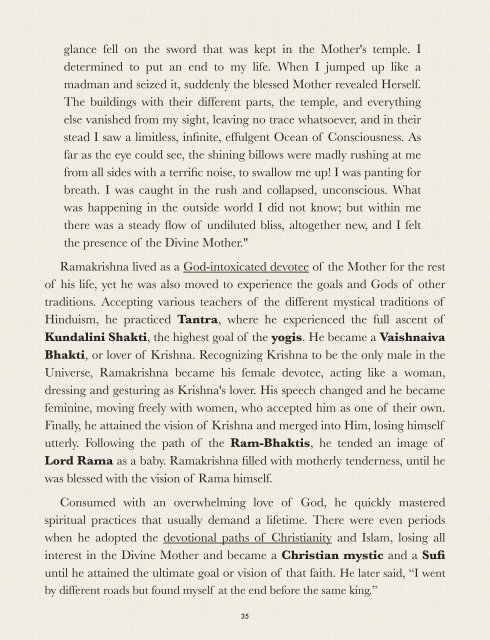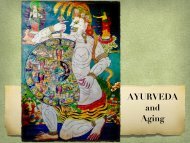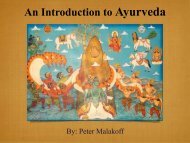How Thoreau's Walden Pond Mixed with the Ganges and Yoga Came to America with Swami Vivekananda
One early morning in 1846, during the coldest days of a New England winter, Henry David Thoreau looked out the window of his small cabin on Walden Pond and saw men cutting its ice into blocks. That ice was hauled by horse to a railroad that ran across the western edge of Walden Pond, packed into a boxcar, taken to Boston and loaded onto a clipper ship that sailed to Calcutta, India, arriving about four months later. Once there, that ice was purchased by grateful members of the East India Company. Thoreau had witnessed a small part of the global ice trade between New England and India that took place during the latter part of the nineteenth century. When Thoreau considered the ice trade, his vision sailed on metaphors far beyond the scope of business. The waters he imagined flowed both east and west and carried not just natural elements, but culture, religion and philosophy as well. He envisioned that after arriving in Calcutta, the New England ice of Walden Pond would eventually melt and run downhill where it would join with the sacred water of the Ganges. He wrote in Walden: "It appears that the sweltering inhabitants of Charleston and New Orleans, of Madras and Bombay and , drink at my well. In the morning I bathe my intellect in the stupendous and cosmogonal philosophy of the , since whose composition years of the gods have elapsed, and in comparison with which our modern world and its literature seem puny and trivial; and I doubt if that philosophy is not to be referred to a previous state of existence, so remote is its sublimity from our conceptions. I lay down the book [Bhagavad-Gita] and go to my well for water, and lo! there I meet the servant of the Bramin, priest of and and who still sits in his temple on the Ganges reading the , or dwells at the root of a tree with his crust and water jug. I meet his servant come to draw water for his master, and our buckets as it were grate together in the same well. The pure Walden water is mingled with the sacred water of the Ganges." This book tells the story of these waters . . .
One early morning in 1846, during the coldest days of a New England winter, Henry David Thoreau looked out the window of his small cabin on Walden Pond and saw men cutting its ice into blocks. That ice was hauled by horse to a railroad that ran across the western edge of Walden Pond, packed into a boxcar, taken to Boston and loaded onto a clipper ship that sailed to Calcutta, India, arriving about four months later. Once there, that ice was purchased by grateful members of the East India Company. Thoreau had witnessed a small part of the global ice trade between New England and India that took place during the latter part of the nineteenth century.
When Thoreau considered the ice trade, his vision sailed on metaphors far beyond the scope of business. The waters he imagined flowed both east and west and carried not just natural elements, but culture, religion and philosophy as well. He envisioned that after arriving in Calcutta, the New England ice of Walden Pond would eventually melt and run downhill where it would join with the sacred water of the Ganges. He wrote in Walden: "It appears that the sweltering inhabitants of Charleston and New Orleans, of Madras and Bombay and , drink at my well. In the morning I bathe my intellect in the stupendous and cosmogonal philosophy of the , since whose composition years of the gods have elapsed, and in comparison with which our modern world and its literature seem puny and trivial; and I doubt if that philosophy is not to be referred to a previous state of existence, so remote is its sublimity from our conceptions.
I lay down the book [Bhagavad-Gita] and go to my well for water, and lo! there I meet the servant of the Bramin, priest of and and who still sits in his temple on the Ganges reading the , or dwells at the root of a tree with his crust and water jug. I meet his servant come to draw water for his master, and our buckets as it were grate together in the same well. The pure Walden water is mingled with the sacred water of the Ganges."
This book tells the story of these waters . . .
Create successful ePaper yourself
Turn your PDF publications into a flip-book with our unique Google optimized e-Paper software.
glance fell on <strong>the</strong> sword that was kept in <strong>the</strong> Mo<strong>the</strong>r's temple. I<br />
determined <strong>to</strong> put an end <strong>to</strong> my life. When I jumped up like a<br />
madman <strong>and</strong> seized it, suddenly <strong>the</strong> blessed Mo<strong>the</strong>r revealed Herself.<br />
The buildings <strong>with</strong> <strong>the</strong>ir different parts, <strong>the</strong> temple, <strong>and</strong> everything<br />
else vanished from my sight, leaving no trace whatsoever, <strong>and</strong> in <strong>the</strong>ir<br />
stead I saw a limitless, infinite, effulgent Ocean of Consciousness. As<br />
far as <strong>the</strong> eye could see, <strong>the</strong> shining billows were madly rushing at me<br />
from all sides <strong>with</strong> a terrific noise, <strong>to</strong> swallow me up! I was panting for<br />
breath. I was caught in <strong>the</strong> rush <strong>and</strong> collapsed, unconscious. What<br />
was happening in <strong>the</strong> outside world I did not know; but <strong>with</strong>in me<br />
<strong>the</strong>re was a steady flow of undiluted bliss, al<strong>to</strong>ge<strong>the</strong>r new, <strong>and</strong> I felt<br />
<strong>the</strong> presence of <strong>the</strong> Divine Mo<strong>the</strong>r."<br />
Ramakrishna lived as a God-in<strong>to</strong>xicated devotee of <strong>the</strong> Mo<strong>the</strong>r for <strong>the</strong> rest<br />
of his life, yet he was also moved <strong>to</strong> experience <strong>the</strong> goals <strong>and</strong> Gods of o<strong>the</strong>r<br />
traditions. Accepting various teachers of <strong>the</strong> different mystical traditions of<br />
Hinduism, he practiced Tantra, where he experienced <strong>the</strong> full ascent of<br />
Kundalini Shakti, <strong>the</strong> highest goal of <strong>the</strong> yogis. He became a Vaishnaiva<br />
Bhakti, or lover of Krishna. Recognizing Krishna <strong>to</strong> be <strong>the</strong> only male in <strong>the</strong><br />
Universe, Ramakrishna became his female devotee, acting like a woman,<br />
dressing <strong>and</strong> gesturing as Krishna's lover. His speech changed <strong>and</strong> he became<br />
feminine, moving freely <strong>with</strong> women, who accepted him as one of <strong>the</strong>ir own.<br />
Finally, he attained <strong>the</strong> vision of Krishna <strong>and</strong> merged in<strong>to</strong> Him, losing himself<br />
utterly. Following <strong>the</strong> path of <strong>the</strong> Ram-Bhaktis, he tended an image of<br />
Lord Rama as a baby. Ramakrishna filled <strong>with</strong> mo<strong>the</strong>rly tenderness, until he<br />
was blessed <strong>with</strong> <strong>the</strong> vision of Rama himself.<br />
Consumed <strong>with</strong> an overwhelming love of God, he quickly mastered<br />
spiritual practices that usually dem<strong>and</strong> a lifetime. There were even periods<br />
when he adopted <strong>the</strong> devotional paths of Christianity <strong>and</strong> Islam, losing all<br />
interest in <strong>the</strong> Divine Mo<strong>the</strong>r <strong>and</strong> became a Christian mystic <strong>and</strong> a Sufi<br />
until he attained <strong>the</strong> ultimate goal or vision of that faith. He later said, “I went<br />
by different roads but found myself at <strong>the</strong> end before <strong>the</strong> same king.”<br />
35


















